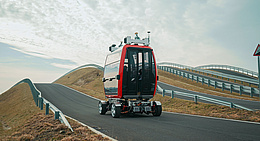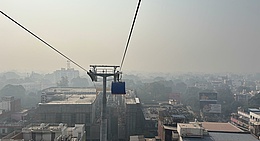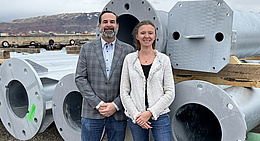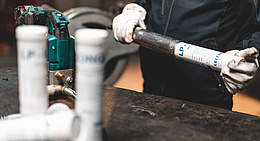1970 – How it all began
With graduation no longer a distant prospect, students are faced with the question of their future careers. That was my situation at the beginning of 1970, the year of my final exams in Civil Engineering at the Faculty of Civil Engineering and Architecture of the Vienna University of Technology.
Fortunately, the question was soon settled for me: In February 1970, I read an announcement on the notice board of the Institute of Railway Engineering and Transport Economy advertising two vacancies for assistant professorships. I picked up my courage and rang the bell and was immediately admitted to the presence of the head of department, Professor Edwin Engel, which was not something to be taken for granted in those days. After a short interview he agreed to hire me. On March 1st I was given a contract of employment as a research assistant, which was converted into the position of an assistant professor by a ministerial decree issued on May 1st (Labour Day!) after I passed my final exams on April 11th.
What I did not know at the time was that Professor Engel’s research work was mainly focussed on ropeway engineering. The institute’s reputation as a centre of excellence in this field had been established by his predecessor, Professor Eugen Czitary. The textbook Seilschwebebahnen (Aerial Tramways) by E. Czitary, second edition, Springer-Verlag Vienna, 1962, is still relevant today with regard to the theoretical principles, even if the actual engineering of modern ropeways is hardly comparable.
At the institute we assistants on the faculty had little contact with practical ropeway construction and operation. We supervised the students’ course work on the subject of non-rail-based systems, which included ropeways, but contact with ropeway manufacturers, operators and authorities was minimal to non-existent. That was when ISR came into my life. In those days its English title was International Aerial Tramway Review, with Snow Conditioning Technology and Official Mouthpiece of the International Organisation for Transportation by Rope (OITAF) and the Competent Authorities in the subtitle. As the only genuine trade journal in its field, it had an important function for us young academics: It kept us up to date with the latest developments in the entire ropeway industry.
ISR articles from the early days
Now that I can look back on fifty years of involvement with ropeways, I thought it would be a nice idea to select individual ISR articles from the beginnings of my ropeway career and track subsequent developments with regard to the various aspects of ropeway engineering dealt with. In this 2020 issue of ISR, I would like to begin with an article on ropeway ropes written by Dr. E. Müller of Stuttgart, which appeared in issue 3/1970 of the International Aerial Tramway Review. Passages of original text by the author are indented and printed in italics.



![[Translate to English:] Foto: Leitner](/fileadmin/_processed_/a/8/csm_Vertragsunterzeichnung_Narvik_6_copyright_LEITNER_print_501f2d5c24.jpg)


![[Translate to English:] (c) Doppelmayr](/fileadmin/_processed_/b/3/csm_85-ATW_Stechelberg-Muerren_Lauterbrunnen_CHE_001_6442c0520d.jpg)







